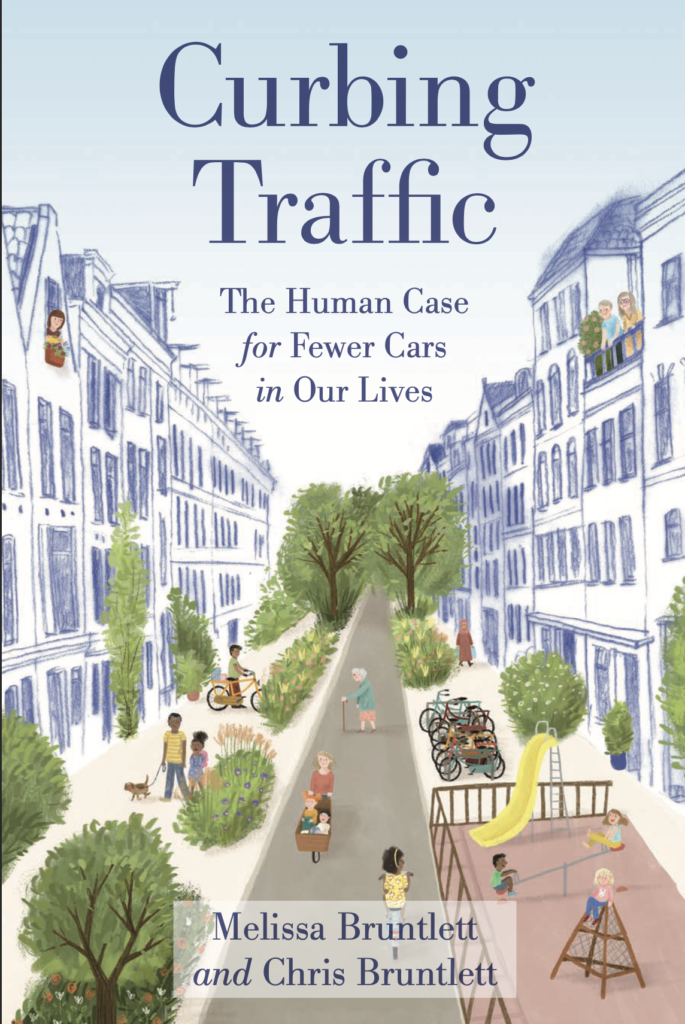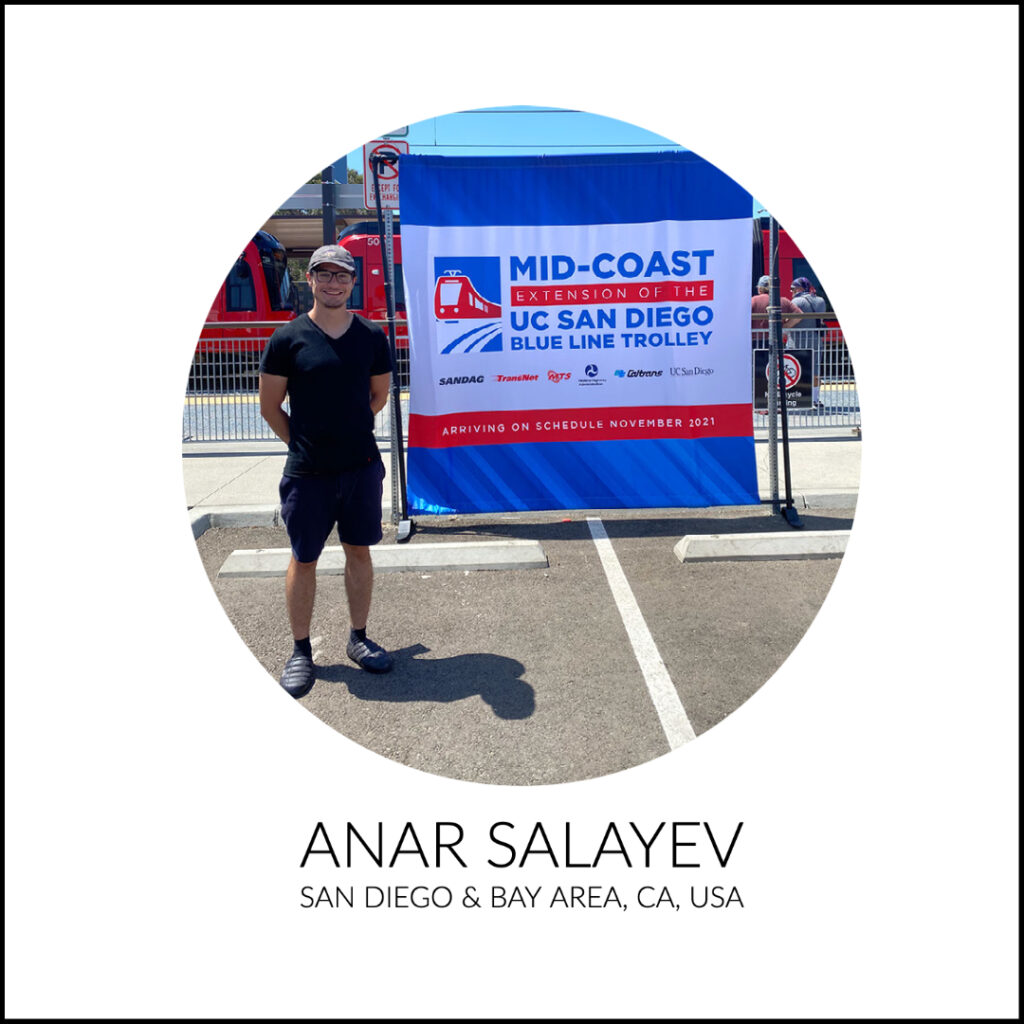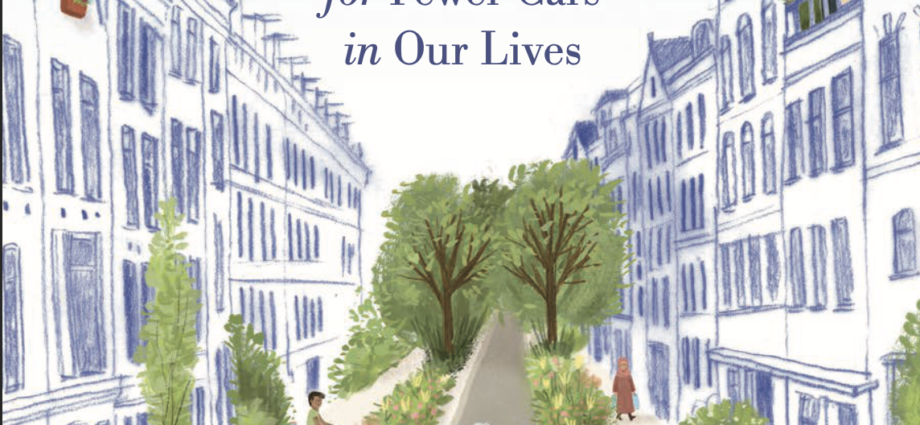Book Review and Takeaways of Curbing Traffic: The Human Case for Fewer Cars in Our Lives
By Anar Salayev, San Diego & Bay Area Correspondent at Pedestrian Space
Main Takeaways:
1. First we shape our cities and then they shape us – Jan Gehl, 2010
Focusing on human-centric urban design has a myriad of benefits that positively reinforce one another. That is, focusing on the development of safe, effective, and efficient bicycle networks also positively impacts pedestrian safety, elderly independence, and eco-sustainability.
2. The Netherlands and the US had nearly opposite reactions to the OPEC oil embargo in 1973: in the NL, the spike in gasoline prices led to many citizens reacquainting themselves with bicycling. This led to a collective desire for safer streets and was reinforced by the Car-Free Sunday policy. This reaction, displaying ecological resilience* resulted in an even split of transportation modes decades later: 1/3 active, 1/3 public transport, 1/3 private automobile. The US, on the other hand, doubled down on car dependency in an attempt to return to normal – showcasing the US automobile industry’s ** engineering resilience. This has resulted in the current transportation mode distribution of 5% active means, 5% public transport, 90% private automobile.
3. * Ecological resilience (the amount of change a system can undergo before it crosses a threshold and flips to an alternate regime) vs ** engineering resilience (of systems and their ability to absorb change and disturbance and still maintain the same relationships): former focuses on persistence, change, and unpredictability whereas the latter focuses on efficiency, constancy, and predictability. Engineering resilience focuses on maintaining the efficiency of function and ecological resilience focuses on maintaining the existence of function.
4. Cities dominated by male leadership focus too much on corridors and not enough on care trips/trip-chaining. A lot of transportation planning focuses on those commuting for work, specifically, those that are trying to travel during peak hours (morning, lunch, evening) – this excludes a vast population of women, children, the elderly, people living with disabilities, and other non-traditional folks that may be running errands on “off-hours”. Because of this, even when bicycle networks are implemented, they frequently serve as express corridors that get commuters from one place to another. “Care trips are often undercounted or uncounted because they don’t fall into easily measured, quantifiable definitions.”
5. Noise pollution is detrimental to our mental and physical health. It, like many other automobile induced”externalities”, disproportionately affects those of lesser economic means

Review:
I generally enjoyed Curbing Traffic and recommend it to anyone interested in learning more about how we can build (or rebuild) better, more human-centric cities. The book reads like a memoir wherein the personal reflections are further bolstered by history, commentary, and exposition.
As an urban planning nerd, I found the book pretty captivating and felt that it provided me with a lot of new information. The way that the book and individual chapters are structured makes it easy to follow and pause when needed. Each chapter highlighted a prevailing problem with modernist urban design (read, North American city planning), proposed some potential solutions, and provided a description of how it has been or is being addressed in the Netherlands.
While there is strong emphasis on cycling and bicycle infrastructure, the book’s overarching thesis proposes how (and why) cities should reclaim their streets from vehicles. The individual chapters all focus on different benefits (e.g. child-friendliness, accessibility, resiliency, etc.) associated with this reclamation and drive home the point that an increase in any one of these dimensions has a ripple effect across the others.
While I did enjoy the book, there are a few things that I think could have been done better. I think there was something missing in the authors’ delivery – though I was enthralled while reading the book, there were times when I couldn’t find the motivation to open the book (though this may be due to a myriad of other reasons). And while I understand the author’s bias towards the Netherlands (after all, they live there), I would’ve liked to learn about how other cities and countries are pioneering human-centric urban design. Finally, I wish they had dedicated at least a chapter to how the average reader could get involved locally and help push human-centric initiatives forward.
Stats– highest possible score 4
Writing style 3.5
Entertainment value 2.75
Layout/Structure/Delivery 3
Information provided 3
X-Factor/Resonance/Persuasiveness 2.75
Overall rating: 3

Anar is a car-enthusiast turned walkability advocate. He seeks a holistic understanding of the built environment. He believes that human-centric urban design will go a long way in combatting climate change, encouraging sustainable practices, and improving health outcomes – both mental and physical.
Read San Diego and Bay Area Correspondent Anar’s content here
Learn more about the Global Walkability Correspondents Network here

